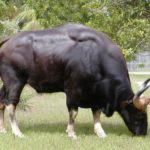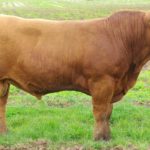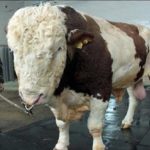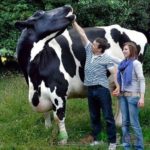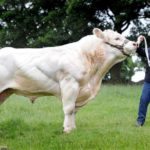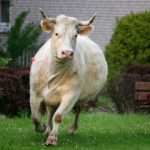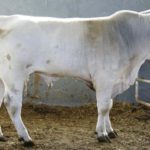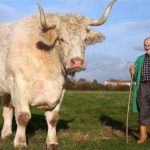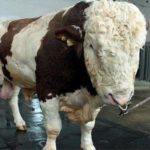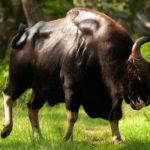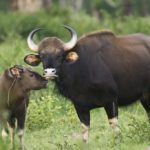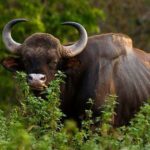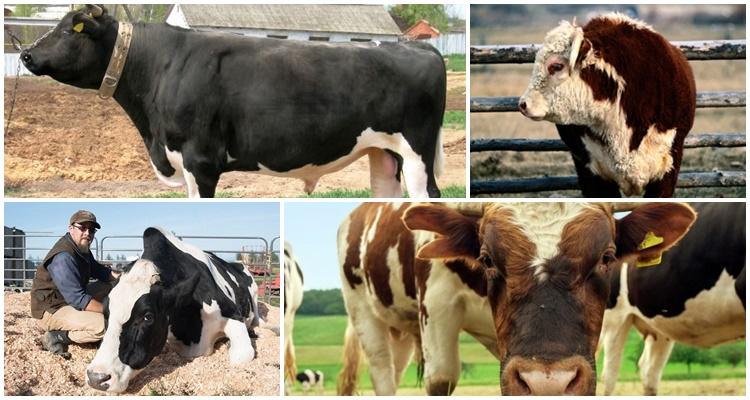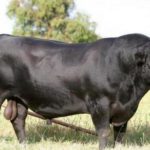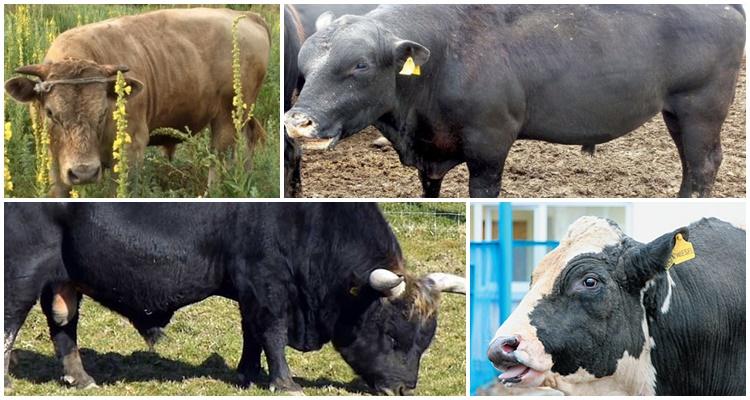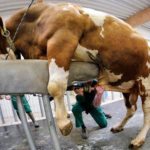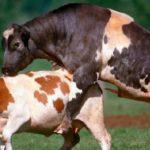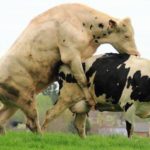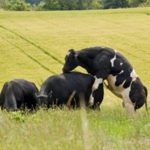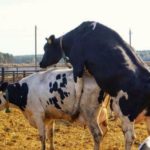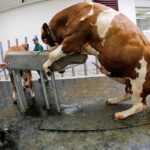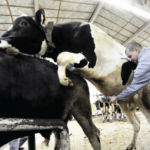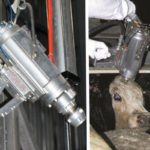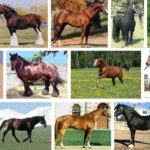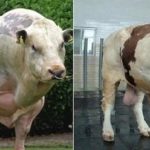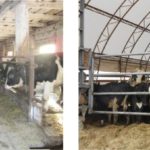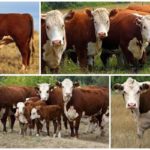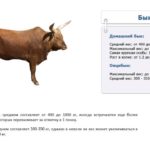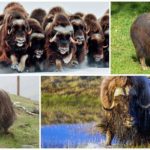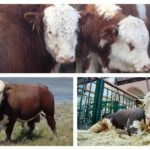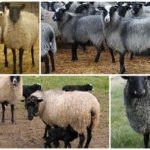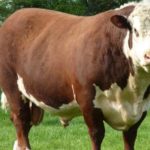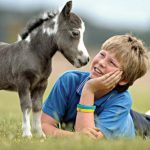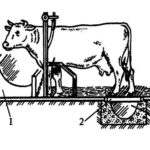To increase the productivity of livestock, farms carry out breeding work. Insemination bulls are used for this purpose. The best representatives of the breed, who have good health, high libido, and also have impressive size, are chosen as sires. It is important to provide quality care and adequate feeding for animals.
Origin of manufacturers
The first attempts at selective selection have a centuries-old history of development.Quite quickly, people realized that the productivity of offspring depends not only on the maternal direction. The bull's data also influences the quality. Such animals are valued in every household.
For a long time, cattle breeding occurred naturally. A sire could cover several hundred cows over the course of a year. This method disabled even the toughest animals. The turning point was the period in the middle of the 20th century.
Largest examples of insemination bulls
Stud bulls are powerful animals obtained as a result of centuries of selection. A weight of 1 ton is the average for breeding cattle, and this is not the limit for animals. Some specimens stand out due to their size and weight even against the background of their huge counterparts.
Porcelain bulls
The largest are porcelain bulls. The impressive size of the animals was influenced by the genes of Podolsk cows. As a result, real giants were obtained. The record holder is a bull from Switzerland named Donneto. With a height of 1.9 meters, the weight of the animal is 1.7 tons.
Trigger
Another participant in the unofficial ranking of giants is the bull Trigger, originally from the UK. A representative of the Fresian breed weighs 1.2 tons, and the animal reaches a height of almost 2 meters. And although the animal is not aggressive and has a calm disposition, its horns were cut off. This measure is designed to ensure the safety of tourists who like to take pictures with the strongman in the background.
Field Marshal of the Cherole breed
The Field Marshal Bull is called the pride of England.A magnificent example of the Cherole breed gains weight by 150 kilograms every year and has already exceeded the 1.5 ton mark. The terrifying appearance does not frighten the owner, who considers the giant a calm and peaceful animal and even left him with horns.
Repp
Bull Repp from Ukraine is known not only for its impressive weight (1.5 tons). During the year, as a result of using the producer's semen, about 50 thousand healthy calves are obtained. This giant is extremely aggressive and vindictive. And even sawed-off antlers do not guarantee safety when communicating with an animal.
Gaurs
Gaurs are wild bulls native to southeastern Asia. Weighing 1.6 tons in height, they often reach almost 3 meters. The unbridled temper and remarkable strength scare away other predators from the animals. Only crocodiles and tigers can resist the giants. But fighting skills do not protect animals from poachers. Recently, the population of gaur bulls has decreased to 20 thousand individuals. The animal breed is listed in the Red Book.
Selection principles
To improve the breed, breeders take the properties of male sires as a basis. Main factors for choosing insemination bulls:
- Pedigree of the breeding animal.
- Features of development from birth to 12 months of age. The rate of muscle growth of the animal and the appearance of the young animals are assessed.
- Checking sperm quality. Several dozen representatives of the opposite sex are fertilized with the semen of one-year-old bulls. Less than half of pregnancies are considered an unsatisfactory outcome.
The success of breeding work also depends on the conditions of keeping the inseminating bulls.
Conditions of detention
To obtain high-quality characteristics of the offspring, follow the rules for keeping animals:
- Insemination bulls are provided with an active lifestyle.Walks don't have to be short. Animals require at least 3 hours of walking and additional exercise.
- The temperament of the bulls is taken into account. If the farm does not practice complete isolation of producers, then they limit the contact of calm animals with unbalanced ones.
- Follow the rules of hygiene. All parts of the bulls' bodies, including the hooves and genitals, are washed daily.
- They also regularly keep the paddock clean.
- Insemination bulls are kept only in spacious, ventilated and bright rooms. Lack of comfort negatively affects the psyche of giants and reduces the quality of sperm.
- The animals are kept on a chain; the rope harness is not strong enough.
The regime of each inseminating bull consists of several points:
- 3 meals a day.
- Rest after each feeding session.
- Walk and work in the middle of the day.
- With natural fertilization - evening mating.
Violation of the usual daily routine or poor living conditions affect the reproductive abilities of the animal.
Diet
The productivity of inseminating bulls depends on the quality of food. A lack or excess of nutrients has a detrimental effect on the condition of the animal’s sperm.
The consequences of feeding failures are sometimes eliminated within 2 months.
The menu includes various products that ensure the normal development of animals:
| Food | Share in the daily diet, % |
| Barley or oats | 25 |
| Sunflower or soybean meal | 20 |
| Corn (must be chopped) | 16 |
| Bran | 15 |
| Molasses or sugar | 10 |
| Yeast | 5 |
| Recycled fish waste | 5 |
| Salt and phosphates | 2 |
| Vitamin supplements | 1 |
Salt is very important for breeding bulls. This product compensates for the deficiency of minerals in the body of animals.It is given in the form of a lick or added to the composition of combined feeds.
The bulls are also provided with sufficient vitamins. A shortage leads to serious consequences:
| Types of vitamins | Required amount | The result of insufficient consumption |
| A, mg | 650 | Slow growth and atrophy of the animal’s genital organs |
| E, mg | 365 | Failures in the body's metabolic processes, pathologies of the animal's limbs |
| D, ME | 14000 | Degeneration of muscle tissue of the animal's skeleton and heart |
The inseminating bulls are fed 3 times a day. The main meal, about 70% of the daily diet, occurs at lunchtime. The remainder is evenly distributed between morning and evening feedings.
Insemination
Farms use 3 methods of inseminating animals - natural, machine and artificial insemination.
Natural free-range
The inseminating bull is released for grazing along with the rest of the livestock. The animal covers cows that have reached the peak of sexual arousal.
The natural range method is suitable for use in small private farms.
Machine
For mating, they purchase a special pen on which the bull places his front legs. Then cows that have reached sexual maturity are brought to the animal.
Artificial insemination
In artificial insemination, the sperm of sire bulls is collected in advance. For storage, use hermetically sealed containers that are placed in liquid nitrogen.
The use of artificial insemination of animals has a positive effect on economic performance. The success of breeding work depends on the comprehensive use of all recommendations. Comfortable living conditions for animals and a balanced diet preserve the health of animals, lead to an increase in the number of animals and the preservation of the breed.

